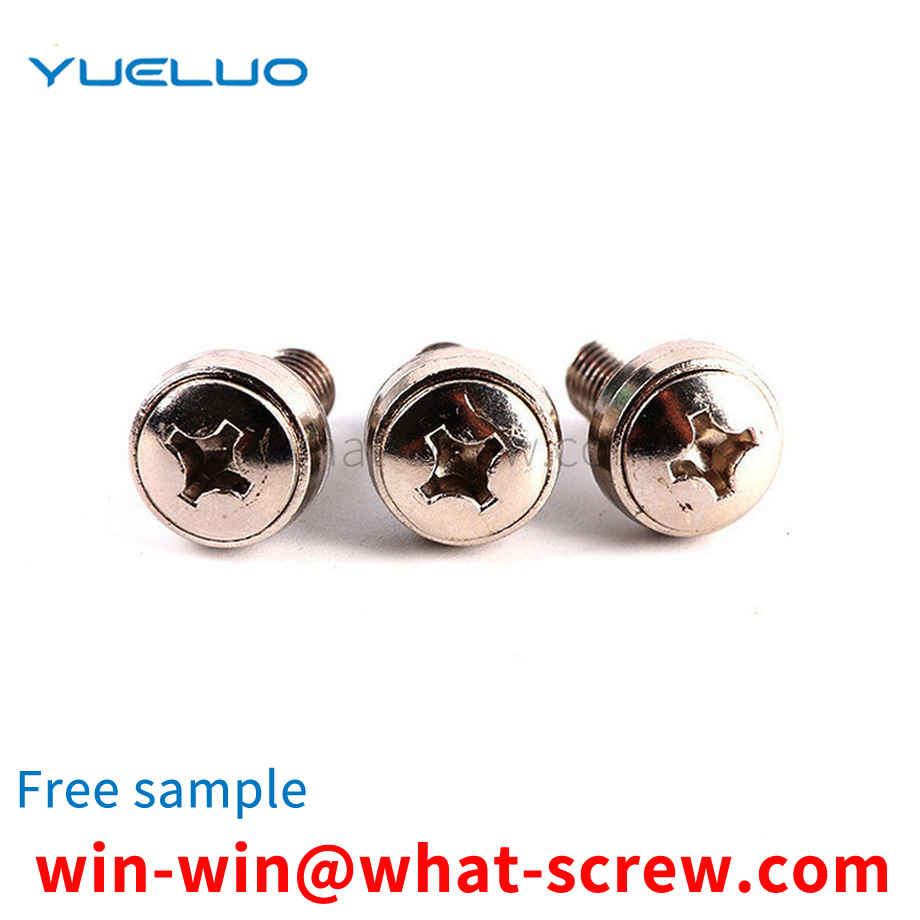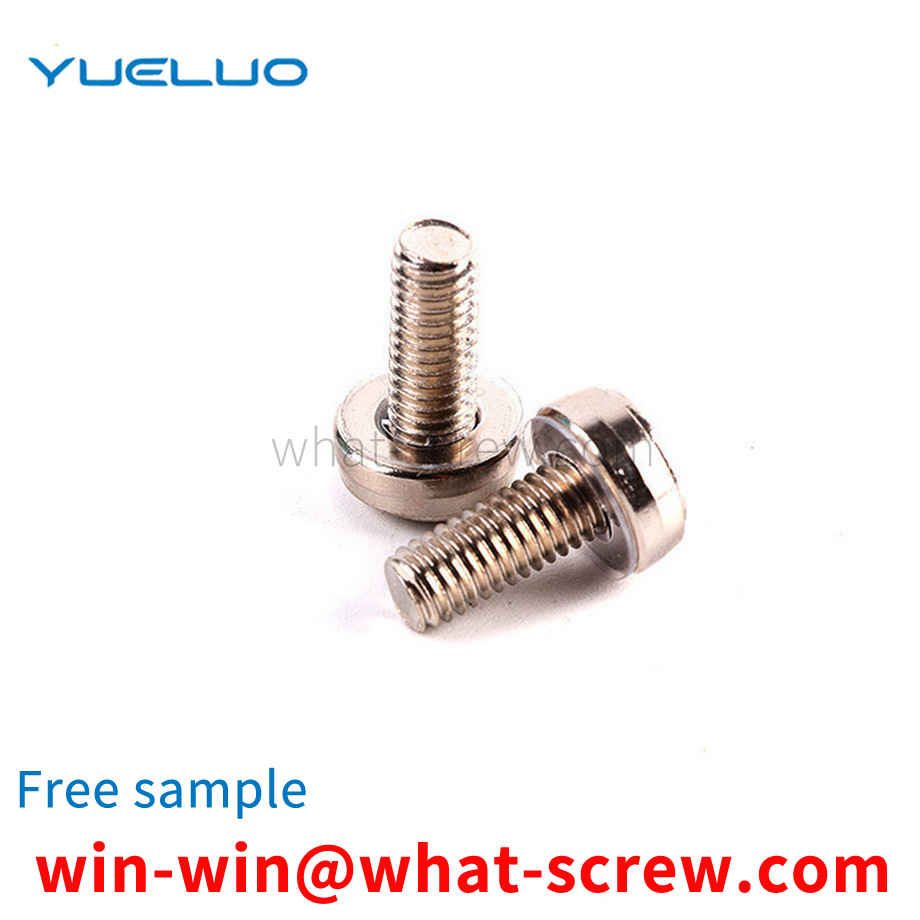Sprinkle the excess standard spring washer 7 on the positioning plate 12-1 on the spring washer positioning plate 2, and shake the spring washer positioning plate 2 by hand. After a short time, the spring washer 7 will be positioned and arranged on the upper positioning plate 12-1. In the upper spring washer hole 2-7, since the width of the opening groove 12-32 of the baffle plate 12-3 is smaller than the diameter of the spring washer hole 2-7, and the thickness of the upper positioning plate 12-1 is designed according to the thickness of the spring washer 7, Only one spring washer 7 can be accommodated in the spring washer hole 2-7 of each upper positioning plate 12-1, and the excess spring washer 7 is cleaned with a brush.
In order to solve the above-mentioned technical problems, a technical scheme adopted by Guangdong Yueluo Hardware Industry Co., Ltd. is: a rivet capable of selecting a breaking point is provided, comprising a nail body and a mandrel, and the mandrel is sequentially provided with from the head to the tail. Hemispherical head, cone and cylinder, the cones are provided with at least three, the mandrel penetrates into the nail body from the bottom of the nail body, and then goes out from the head of the nail body, the hemispherical head and the cylinder Exposed on the bottom of the nail body and the outside of the head, the cones are all arranged inside the nail body.
Installation method broadcast 1. One-time burying method: When pouring concrete, bury the anchor bolts. When the high tower is controlled by overturning, the anchor bolt should be buried once. 2. Reserved hole method: The equipment is in place, the holes are cleaned, the anchor bolts are placed in the holes, the equipment is positioned and aligned, and then poured with non-shrinkage fine stone concrete that is one level higher than the original foundation, and compacted and compacted. . The distance from the center of the anchor bolt once buried to the edge of the foundation should not be less than 2d (d is the diameter of the anchor bolt), and should not be less than 15mm (d≤20, it should not be less than 10mm), not less than half the width of the anchor plate Add 50mm, when the above requirements cannot be met, appropriate measures should be taken to strengthen it. The diameter of the anchor bolts used for the structure should not be less than 20mm. When subjected to earthquake action, double nuts should be used for fixing, or other measures to effectively prevent loosening should be adopted, but the anchorage length of anchor bolts should be increased by 5d compared with the anchorage length of non-seismic action. Installation planning of anchor bolts Treatment of anchor bolts loose in the foundation When the anchor bolts are tightened, the bolts may be pulled out. At this time, the bolts should be adjusted to their original positions, and the foundation around the bolts should be shoveled out enough. , and then weld two U-shaped steel bars vertically and horizontally on the bolts, and finally clean the pit with water and grouting, and then tighten the live anchor bolts after the concrete has solidified to the design strength. The treatment method of the live anchor bolt deviation is roughly the same as the dead ground. The method for the anchor bolts is the same, except that the anchor bolts can be pulled out for processing. If the bolt is too long, a section of the thread can be cut off on the machine tool; if the bolt is too short, it can be extended by hot forging; if the position is inconsistent, it can be corrected by bending. Application industry: suitable for various equipment fixing, steel structure foundation embedded parts, street lights, traffic signs, pump, boiler installation, heavy equipment embedded fixing, etc.
The cylindrical pin is mainly used for positioning and can also be used for connection. It is fixed in the pin hole by means of interference fit. Cylindrical pins used for positioning are usually not subject to load or a small load, the number is not less than two, distributed in the symmetrical direction of the overall structure of the connected parts, the farther the better, the pin is in each connected part The length is about 1-2 times the minor diameter. Cylindrical pins can also be used as shafts, and a straight shaft can also be used as cylindrical pins or even centering pins. So what's the difference between a shaft and a pin? The shaft can be used to transmit torque, bear bending moment and torque, and the cylindrical pin can be used for positioning, bear extrusion force and shear force. In a sense (such as small equipment), cylindrical pins can also be used as shafts.
Self-tapping screws were introduced into the industry in large numbers in 1914. The earliest design (essentially imitating a wood screw) was a thread-forming screw made of hardened steel with an A-ended end, mainly used to connect sheet metal channels for heating and ventilation systems. Therefore, it is also called: sheet metal screw. By the end of the 1920s, with the widening of the market and new applications, emphasizing new designs, its application performance was widely improved. The following introduces the four different stages of the development of self-tapping screws in 40 years: thread forming self-tapping screws, thread cutting self-tapping screws, thread rolling self-tapping screws and self-drilling self-tapping screws. 1. Ordinary self-tapping screws (thread forming self-tapping screws) Ordinary self-tapping screws are a direct product of early sheet metal screws. The principle is: when screwing it into a prefabricated hole, the internal thread connected to the screw is formed by the displacement of the material around the hole and the material is pushed into the space between the threads. 2. Self-cutting self-tapping screws (thread cutting self-tapping screws) Because ordinary self-tapping screws are formed only in very thin threads. And it can be easily realized on materials with good toughness. Develop and expand the use of self-tapping screws to thicker sections and harder, brittle and other materials with poor deformability. In this way, the self-cutting self-tapping screw is developed: a cutting groove or cutting edge is machined at the end of the screw shank. When this kind of screw is screwed into the prefabricated hole, the screw acts as a tap and actually cuts out the thread that connects with itself. 3. Self-Extrusion Self-Tapping Screws (Thread Rolled Self-Tapping Screws) In the early 1950s, fastener engineers began to recognize the potential advantages of self-tapping screws as structural rather than just lightly loaded attachments. This has led to the development of a new self-tapping screw thread rolling self-tapping screw (self-extrusion self-tapping screw). According to the design principle of cold forging taps, the thread and end are specially designed for this kind of screw, so that the screw can be formed by applying intermittent and periodic pressure on the crest of its thread instead of on the side of the entire thread. Internal thread for connection. By concentrating and limiting the forming pressure, the pressurized material next to the hole is made to flow more easily and to better fill (squeeze) into the flanks and roots of the thread of the self-tapping screw. Since the frictional resistance of screwing in is much lower than that of ordinary self-tapping screws, threaded rolling self-tapping screws (self-extrusion self-tapping screws) can be screwed into thicker sections. At the same time, it has better screw control and tightening torque, and greatly improves the connection strength and overall firmness. The engineering standard of this kind of self-tapping screw stipulates that the selection of materials, the mechanical properties of heat treatment and the working performance should be strictly controlled. 4. Self-drilling and self-tapping screws (self-drilling screws) People have done statistics: Among the ten expenses that constitute the total assembly cost, the highest one includes the processing of holes. In practical applications of self-tapping screws, prefabricated holes need to be processed. Moreover, in order to make the prefabricated holes have good effect in practical application, the size of these holes must be controlled within a fairly strict range. In the early 1960s, self-drilling and self-tapping screws appeared. A major step forward in reducing assembly costs by eliminating the need to machine prefabricated holes. In general, self-drilling and self-tapping screws realize drilling, tapping and tightening in one operation. These are the four main stages of self-tapping screw design and development. In addition, two newly developed products are also worthy of introduction. Both are screws with a special thread type. One is designed for plastic and other low-strength materials; the other is used in the construction industry to connect cement wall panels, so it is also called wall panel self-tapping screws.
We have many years of experience in the production and sales of screws, nuts, and flat washers. Firmware Solutions.



















 Service Hotline
Service Hotline




